Get Best Treatment for Keratoconus
- An affordable and best keratoconus treatment by the top doctors
- Keratoconus surgery with advanced technologies.
- Online consultation on Keratoconusa
FREE Tele-Consultation
Book Appointment or Video Consultation online with top eye doctors
"*" indicates required fields
What is Keratoconus?
Keratoconus is a medical condition in which the round and dome-shaped cornea of an individual’s eye starts to become thin, which further results in the development of a cone-like bump.
In most cases, eye specialists have found that it affects one eye more than the other. If an individual is suffering from the initial stages of this medical condition, then an eye specialist will prescribe him certain types of spectacles as a method of treatment but in some cases, he can also be told to wear “soft contact lenses”. And if this condition keeps progressing at an advanced rate, then a “corneal transplant”may become necessary.
- It is a non-inflammatory eye condition.
- Keratoconus results in the development of a blurred vision and heightened sensitivity to light.
- People who fall within the age gap of 10-25 years are mostly affected by this medical condition.
Symptoms Of “Keratoconus”
Keratoconus is not a rare form of eye ailment as 1 out of every 2000 people has been found to be suffering from this medical condition.A person may not even be aware that he is suffering from “Keratoconus”, as this condition has a very slow rate of progression. Some major symptoms of Keratoconus have been mentioned below:-



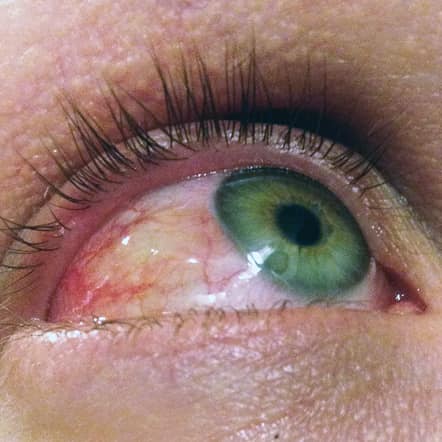
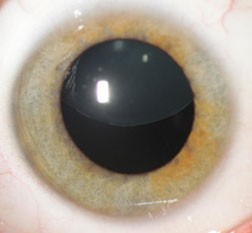
Keratoconus Causes
Although there is no specific known cause of Keratoconus, it is highly associated with the following causes:
Genetics:
If a person has one or more members of his family already diagnosed with this condition, then it is highly possible that the concerned person is suffering from Keratoconus too.
Eye Rubbing:
If a person has the habit of rubbing his eyes relentlessly, then he may develop Keratoconus in his progressive years.
Oxidative Stress:
The phenomenon of “Oxidative Stress” can also cause Keratoconus in an individual. When there is a high level of disparity between the generation of free radicals and the body’s capability to counterbalance the negative effects through neutralization with antioxidants, then there is an occurrence of Oxidative Stress in an individual’s body.
Keratoconus Diagnosis
The first and foremost method for the diagnosis of Keratoconus is a proper eye exam. The eye exam may entail certain tests for an accurate diagnosis of this medical condition. The tests have been mentioned below:-
Corneal topography:
An eye specialist may perform the procedure of Corneal topography on an individual’s eyes to detect the progression of this condition in its early stage. Under this procedure, a three-dimensional map of the cornea’s surface curvature is generated. Corneal topography is a non-invasive technique in the medical arena.
Slit-lamp exam:
An eye specialist can also take the help of a “Slit-lamp exam” to detect the occurrence of Keratoconus. A slit lamp is a medical instrument with a high power light source. It assists an eye specialist by providing a nearby look of an eye’s inside and outside structures.
Pachymetry test:
An eye specialist may also perform the “Pachymetry test” on an individual’s eye to detect “Keratoconus”. The purpose of this test is to calculate the thickness of the cornea.
Keratoconus Treatment
If Keratoconus is in its initial stage, then it can be treated with the assistance of eyeglasses or soft contact lenses. But if this medical condition keeps worsening and the cornea keeps getting thin, then neither eyeglasses nor soft contact lenses will help in the restoration of a precise vision.
Corneal collagen crosslinking(CXL)
This is a new method of treatment, which has shown great promise in the treatment. This form of treatment can put a halt to the spread of Keratoconus and may even prevent the need for a cornea transplant in the future. There are two variants of Corneal collagen crosslinking (CXL), which are known as “epithelium-off” and “epithelium-on”. In recent times, a joint combination of corneal crosslinking and Intacs implants has proven to be very useful for the treatment of keratoconus.
Custom soft contact lenses
The option of “Custom soft contact lenses”, is also available to treat this medical condition. These kinds of contact lenses are specifically tailored to a person’s keratoconic eye(s) and have been found to be more congenial than hybrid contact lenses in the case of a specific set of wearers.
Gas permeable contact lenses
If “Custom soft contact lenses” are unable to assist with the problem of keratoconus, then “Gas permeable contact lenses” have been found to be a viable method of treatment. These kinds of contact lenses cover the cornea and enhance an individual’s vision by replacing the odd shape of the cornea with an even, unvarying refracting surface.
Cornea transplant
When keratoconus has reached an advanced stage, then the most plausible option for it’s treatment is a “Cornea transplant”. An individual who has undergone this surgical procedure is bound to take a couple of months for the proper stabilization of his vision. There are certain kinds of risks attached to this medical procedure. An individual can develop an infection in the eye after the procedure. The possibility of “Graft rejection” is also associated with this procedure.
Scleral and semi-scleral lenses
“Scleral and semi-scleral lenses”, are another alternate mode of treatment for a person suffering from keratoconus. When the gas permeable contact lenses have a large scale diameter, then they are known as “Scleral and semi-scleral lenses”. These kinds of contact lenses are large enough to rest on the “Sclera”. In the case of “scleral lenses”, a large portion of the “Sclera” is covered, whereas in the case of “semi-scleral lenses”, a small portion of the “Sclera” is covered.
Best Cornea Treatment hospital
There are multiple good hospitals for cornea treatment in India including AIIMS, Sankara Nethralaya, LVPEI & Eye Mantra. At Eye Mantra Hospital, we deal with a lot of problematic corneal cases daily. We have skillful and specialized surgeons who are highly experienced in dealing with several diseases linked to the cornea. Eye Mantra Hospital is one among the few eye hospitals in the country that gives super-specialty eye services in Cornea.
We, at Eye Mantra Eye Centre, recognize the significance of the sense of vision for a fulfilled life and are dedicated to offering high-quality care for your eyesight.
Our Team

Cataract, Retina, Glaucoma, LASIK

Retina Specialist

Cataract, Retina, Glaucoma, LASIK

Cataract, Retina, Glaucoma, LASIK
Keratoconus Facilities
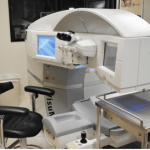
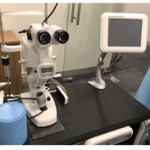


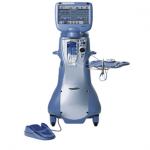


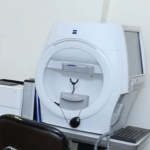
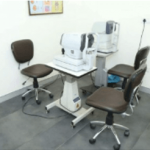
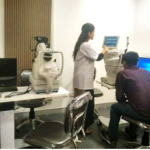
FAQ's
The rate of progression of keratoconus in both the eyes is different from each other. However, in 90%of the cases the disease develops itself in both the eyes.
Keratoconus affects your vision. The symptoms of this condition could be-
- Blurry vision
- Distorted vision
- Light sensitivity
- Disturbed night vision
- Cloudy vision
Yes you can live a normal life with keratoconus just like any other person with good sight. you just need to get the proper treatment, and you are fine. This condition is like any other treatable condition.
Keratoconus does not usually lead to complete blindness. It grows slowly with time and degrades the vision to a level that the person can’t do daily activities. After some time, the lenses and eyeglasses do not work as effectively, so the person has to go for cornea transplant eventually. Once done with the surgery, your vision will go back to normal.
You will need good vision for performing some activities like driving as it involves the safety of you and others. Every country’s eligibility criteria differ to have a vision for getting a driving license. You need to have at least 20/40 vision or better(with or without glasses) to get it. You can check the Department of Motor Vehicles of your state.
You can prevent the progression of keratoconus by getting it diagnosed early. If you diagnose it at an early stage when your vision is slightly affected, then in those cases your eye doctor will treat it beforehand and try to prevent future blindness.
Yes. Children can also develop keratoconus.Sometimes it is in one eye and sometimes in both the eyes. Although it can be controlled with spectacles, corneal transplant may be needed if it is not treated at the right time.
There is no evidence that computer use can worsen the keratoconus, but it’s best to not use computers too much to protect your eyes from digital eye strain.
There are multiple good cornea doctors in India. Eye Mantra has some of the top Cornea doctors / surgeons. Dr. Shweta Jain is one of the best Cornea specialists in India. Dr. Shweta Jain has successfully performed more than 1000+ keratoconus treatments so far. The results from the Eye Mantra Cornea surgery program turns out to be better for many people. Post Cornea surgery, Improved vision and depth perception.


